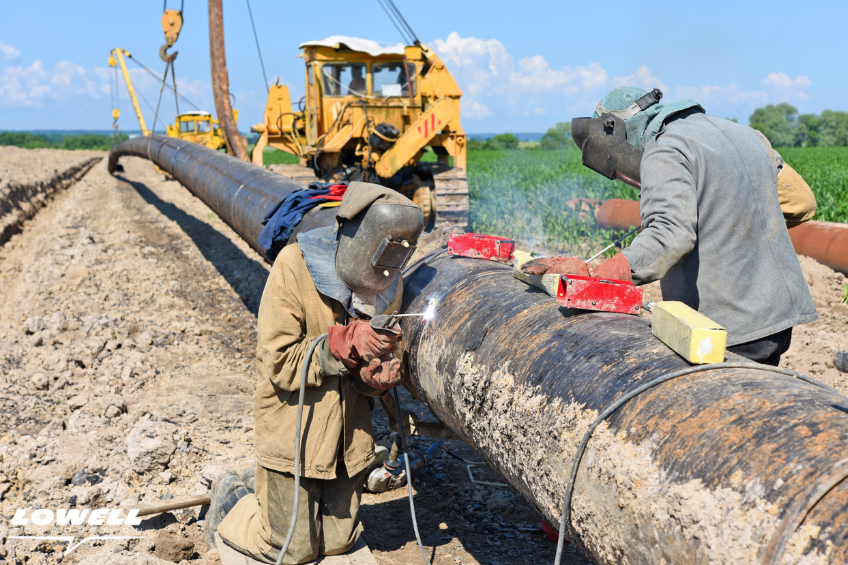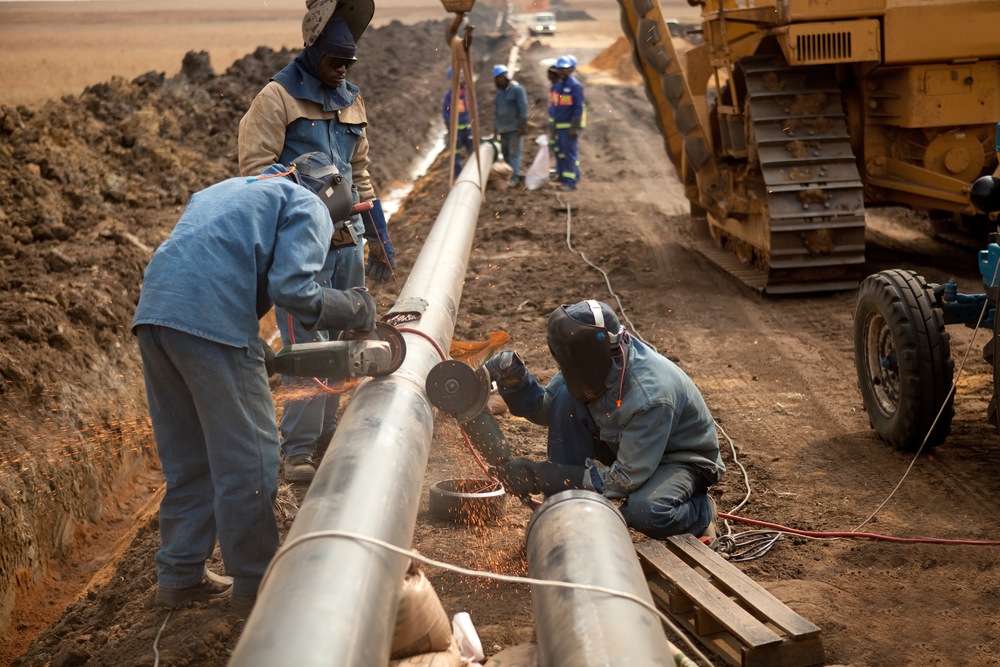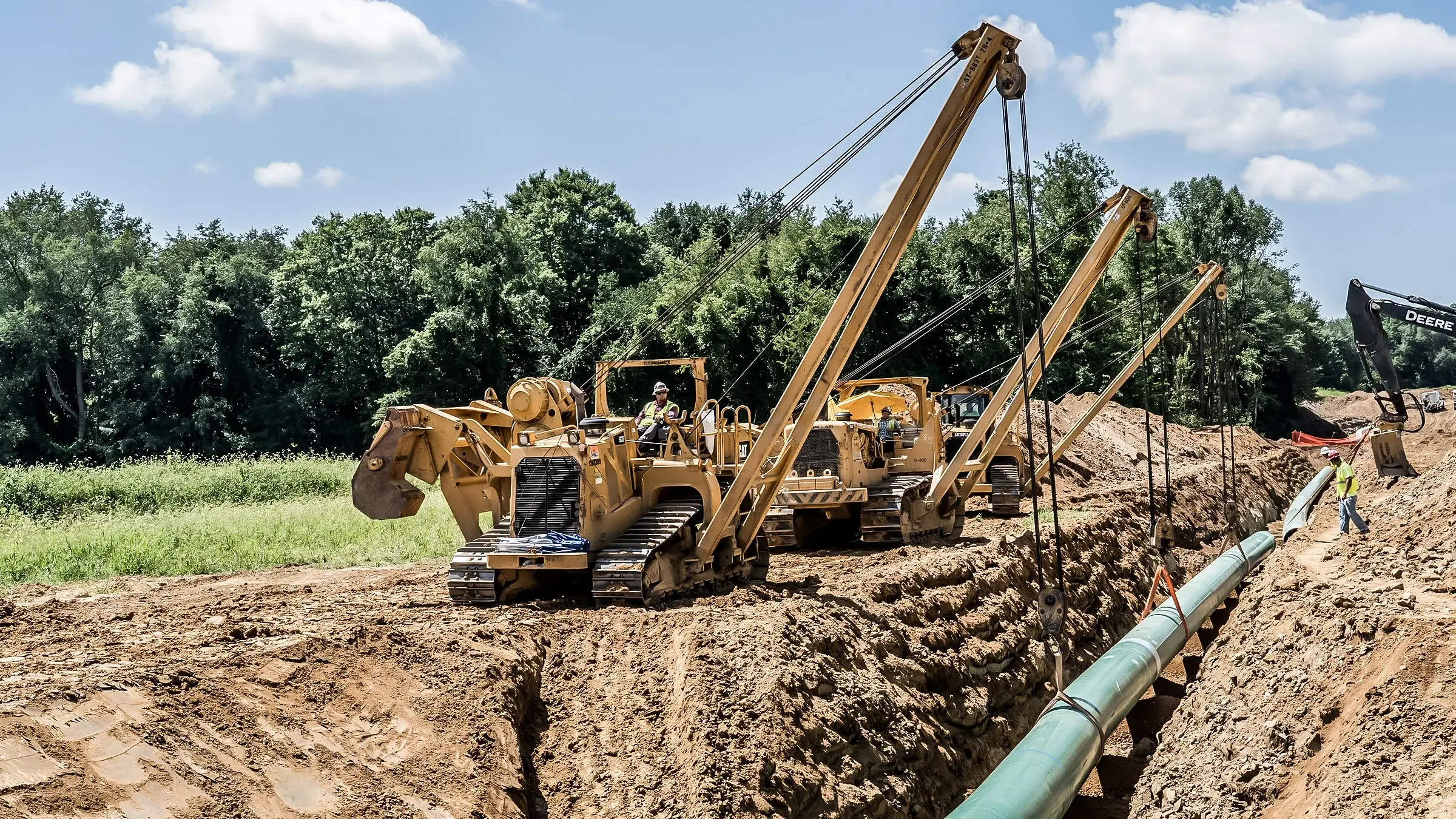The role of Pipeline services Midland Texas in reducing costs
Wiki Article
Comprehending the Key Attributes of Pipeline Solutions and Their Effect On Effectiveness
Pipeline services play an important duty in various markets, affecting operational performance noticeably. Key attributes, such as innovative tracking modern technologies and maintenance methods, are crucial for lessening downtime. Additionally, regulative conformity assurances security and environmental management. However, the interplay in between layout, facilities, and economic elements can complicate these processes. Recognizing just how these elements impact general efficiency elevates vital questions concerning finest techniques and future developments in the field.The Function of Innovation in Pipeline Surveillance
As innovations in technology remain to evolve, the relevance of reliable pipe surveillance has ended up being significantly noticeable. Modern pipe systems rely upon innovative monitoring tools that boost functional effectiveness and security. Technologies such as real-time data analytics, sensing units, and drones supply drivers with immediate insights into pipeline problems, enabling them to detect leakages, deterioration, and various other possible issues prior to they rise right into considerable troubles.The integration of Web of Things (IoT) tools has actually transformed typical tracking approaches, enabling for continual monitoring and automated coverage. This positive method not just decreases risks however additionally optimizes maintenance routines and source appropriation. Furthermore, advanced software application platforms facilitate data visualization and analysis, empowering decision-makers to respond promptly to anomalies. Collectively, these technical advancements not just improve pipeline stability but also foster environmental stewardship by mitigating the prospective influence of leakages and spills.
Upkeep Approaches for Boosted Performance
Efficient upkeep methods are essential for optimizing pipeline efficiency. Executing anticipating upkeep methods, sticking to routine assessment methods, and creating robust emergency situation response strategies can greatly enhance operational dependability. These approaches not only minimize downtime but also add to the overall security and honesty of pipe systems.Anticipating Maintenance Methods
Anticipating maintenance methods are progressively acknowledged for their capability to enhance functional effectiveness in pipeline solutions. By leveraging data analytics and keeping track of innovations, these strategies enable drivers to anticipate equipment failings prior to they take place. This positive approach decreases unexpected downtime, minimizes upkeep prices, and expands the life expectancy of essential assets. Sensors and IoT devices play a critical duty in gathering real-time information, enabling for the analysis of devices health and performance trends. Artificial intelligence algorithms examine this information to identify patterns and anticipate possible issues. Consequently, pipe operators can schedule upkeep activities throughout non-peak times, maximizing source allowance and ensuring continuous procedure. Ultimately, the adoption of predictive maintenance promotes a much more reputable and reliable pipeline infrastructure.
Routine Examination Protocols
Routine evaluation methods work as a foundation of maintenance techniques targeted at enhancing efficiency in pipeline operations - Creek Pipe Midland TX. These protocols include systematic analyses of pipe stability, concentrating on spotting prospective issues prior to they intensify. Routine inspections usually consist of aesthetic assessments, leak discovery modern technologies, and stress surveillance to assure peak efficiency. By adhering to well established routines, operators can identify rust, material wear, or obstruction, thus decreasing downtime and repair expenses. Furthermore, information gathered throughout examinations can educate predictive upkeep initiatives, enabling for a positive strategy to pipeline management. Inevitably, regular assessments not only extend the life-span of pipe framework but additionally contribute to safer and much more trustworthy transportation of sources, enhancing general operational efficiencyEmergency Feedback Planning
Emergency situation feedback planning is important for preserving effectiveness in pipeline operations, ensuring that drivers are prepared to deal with unforeseen occurrences promptly and properly. A well-structured emergency reaction plan consists of clear methods, designated duties, and interaction strategies to reduce threats linked with pipeline failures. Routine drills and training improve team readiness and familiarize employees with emergency situation procedures. Additionally, having easily offered resources, such as spill control equipment and emergency situation contact checklists, can considerably decrease feedback times. By integrating real-time monitoring modern technologies, drivers can swiftly recognize and react to issues, minimizing ecological impact and functional downtime. Eventually, a thorough emergency response strategy not just safeguards assets and workers yet also strengthens the total efficiency of pipe services.Regulatory Compliance and Safety And Security Requirements
Regulatory conformity and safety and security criteria play a necessary duty in the pipeline services industry. Midland pipeline construction company. Abiding by sector policies guarantees that companies implement efficient safety and security protocols and risk management techniques. This commitment not just shields personnel and the atmosphere yet additionally boosts overall functional performanceCompliance With Industry Rules
Conformity with sector laws is necessary for making sure the safety and performance of pipeline procedures. Regulatory structures, such as those established by the Environmental Security Company (EPA) and the Pipeline and Hazardous Materials Security Administration (PHMSA), established stringent requirements that operators have to follow. These laws cover different facets, consisting of pipeline design, building and construction, upkeep, and tracking, assuring that systems run safely and efficiently. Non-compliance can cause serious fines, operational hold-ups, and ecological dangers. By adhering to these regulations, pipe firms not only safeguard public security and the atmosphere yet likewise boost their operational effectiveness. Eventually, governing conformity promotes trust among stakeholders, ensuring that pipe solutions can operate seamlessly in an affordable landscape while satisfying legal obligations.
Safety And Security Procedure Execution
Effective security method implementation is a crucial part of pipeline operations, very closely connected to regulative conformity and safety criteria. Sticking to these protocols not just guarantees the security of personnel but likewise safeguards the environment and content infrastructure. A robust security structure includes normal training, comprehensive evaluations, and the usage of appropriate security equipment. Organizations needs to remain vigilant in upgrading their protocols to mirror changes in policies and technical developments. Compliance with recognized safety requirements decreases the danger of mishaps and enhances operational effectiveness. Furthermore, a society of safety and security promotes worker involvement and responsibility, adding to general business success. Inevitably, efficient security protocol implementation is extremely important in keeping the stability of pipe solutions and achieving long-lasting sustainability in operations.Threat Monitoring Approaches
Carrying out robust danger administration techniques is important for guaranteeing that pipe procedures stick to regulatory needs and safety and security standards. Organizations should recognize prospective hazards and analyze threats related to pipeline activities. This entails performing complete examinations, using innovative monitoring technologies, and preserving conformity with sector regulations. Regular training for personnel on safety procedures enhances situational recognition and prepares teams to react successfully to emergency situations. Additionally, establishing backup plans and carrying out drills can considerably mitigate threats. Working together with regulatory bodies ensures alignment with advancing safety and security standards. By focusing on risk monitoring, pipeline solutions can boost operational efficiency while safeguarding both the atmosphere and public safety and security. Eventually, an aggressive method to take the chance of administration cultivates a culture of safety and security within the market.Pipeline Design and Framework Considerations
How can the style and facilities of pipelines influence total operational efficiency? The arrangement of pipelines plays a crucial function in determining their efficiency. Reliable design decreases rubbing losses, therefore reducing energy consumption during fluid transport. Variables such as diameter, product option, and layout straight impact circulation prices and upkeep demands.Furthermore, tactical placement of valves and checking systems boosts operational control and security. Midland pipeline construction company. Infrastructure considerations, consisting of access for repair and maintenance, significantly affect downtime and general performance
Integrating innovative modern technology for real-time monitoring helps with timely discovery of leaks or inadequacies, making sure swift actions to problems. The total structural integrity, influenced by product toughness and ecological aspects, likewise shapes lasting functional success. Thoughtful layout and durable infrastructure are vital for maximizing pipe effectiveness, inevitably adding to the reliability and productivity of pipe services.
Environmental Impact and Sustainability Practices
While the demand for pipe solutions proceeds to expand, understanding the ecological impact and embracing sustainability methods has actually become progressively vital. The building and operation of pipes can notably impact environments, wildlife habitats, and water sources. To minimize these effects, companies are implementing advanced modern technologies and techniques aimed at lowering emissions, avoiding spills, and minimizing land interruption.
Sustainability efforts typically include making use of ecologically pleasant products, boosting power effectiveness, and utilizing renewable resource resources to power operations. In addition, companies are from this source increasingly performing thorough environmental analyses before task initiation, making sure compliance with laws and stakeholder interaction.

Cost Management and Economic Consider Pipeline Services
As the pipe industry expands, efficient expense management and understanding financial factors end up being essential for maintaining competitiveness. Business face different economic stress, including varying product costs, labor costs, and regulative compliance costs. To navigate these obstacles, pipe company should embrace critical financial preparation and budgeting practices.Investing in technology can improve operational effectiveness, eventually decreasing prices in time. In addition, reliable task monitoring assurances that resources are allocated effectively, minimizing hold-ups and unexpected expenditures.

Market problems, such as need for energy and geopolitical elements, additionally affect financial feasibility. Firms must stay active, readjusting their methods in feedback to these exterior factors.
Often Asked Questions
What Are the Different Types of Pipeline Solutions Available?
Different sorts of pipe services include transport, storage space, upkeep, evaluation, and repair service. Each service plays an important function in ensuring the smooth activity of materials, boosting security, and reducing operational interruptions throughout various sectors.Just How Often Should Pipeline Inspections Be Carried Out?
Pipeline evaluations must be conducted frequently, commonly each to 3 years, depending on the type and condition of the pipeline. A lot more constant inspections might be necessary for older or risky pipes to guarantee security and stability.
What Are the Key Causes of Pipeline Failures?
The primary causes of pipeline failures include deterioration, defective building and construction, material problems, external damages, leakages, and functional mistakes. Each element contributes substantially to prospective dangers, highlighting the value of regular upkeep and monitoring for safety and security.Exactly How Can Firms Boost Pipeline Service Dependability?
Business can enhance pipe service dependability by carrying out normal maintenance timetables, making read this article use of innovative monitoring modern technologies, performing complete examinations, spending in employee training, and embracing positive risk management methods to expect and reduce prospective failures.What Role Do Operators Play in Pipeline Providers?
Operators play a necessary duty in pipeline services by making sure risk-free transport, maintaining devices, keeping track of system stability, working with maintenance, and reacting to emergency situations. Their competence straight affects operational performance and lessens disruptions in solution shipment.Report this wiki page